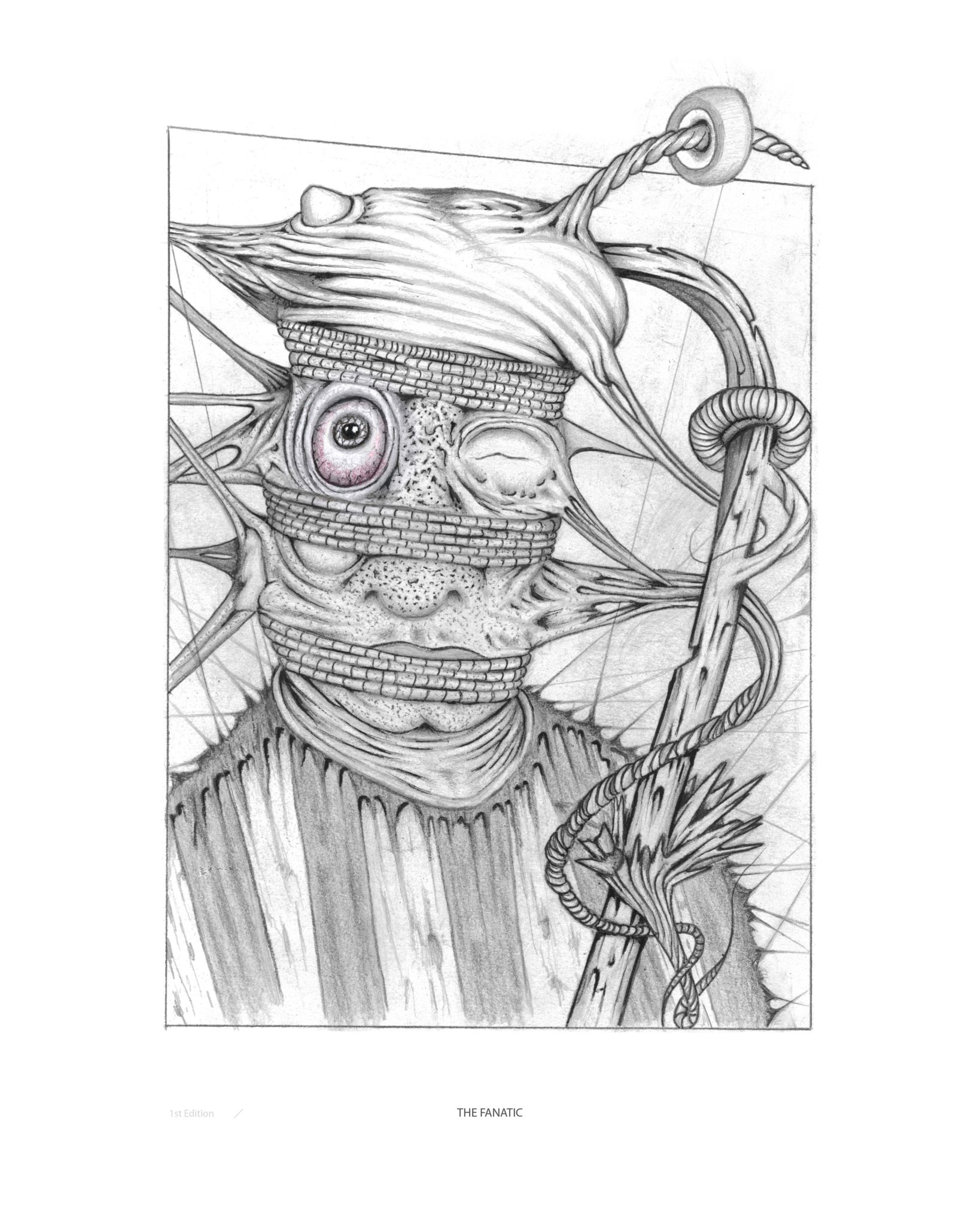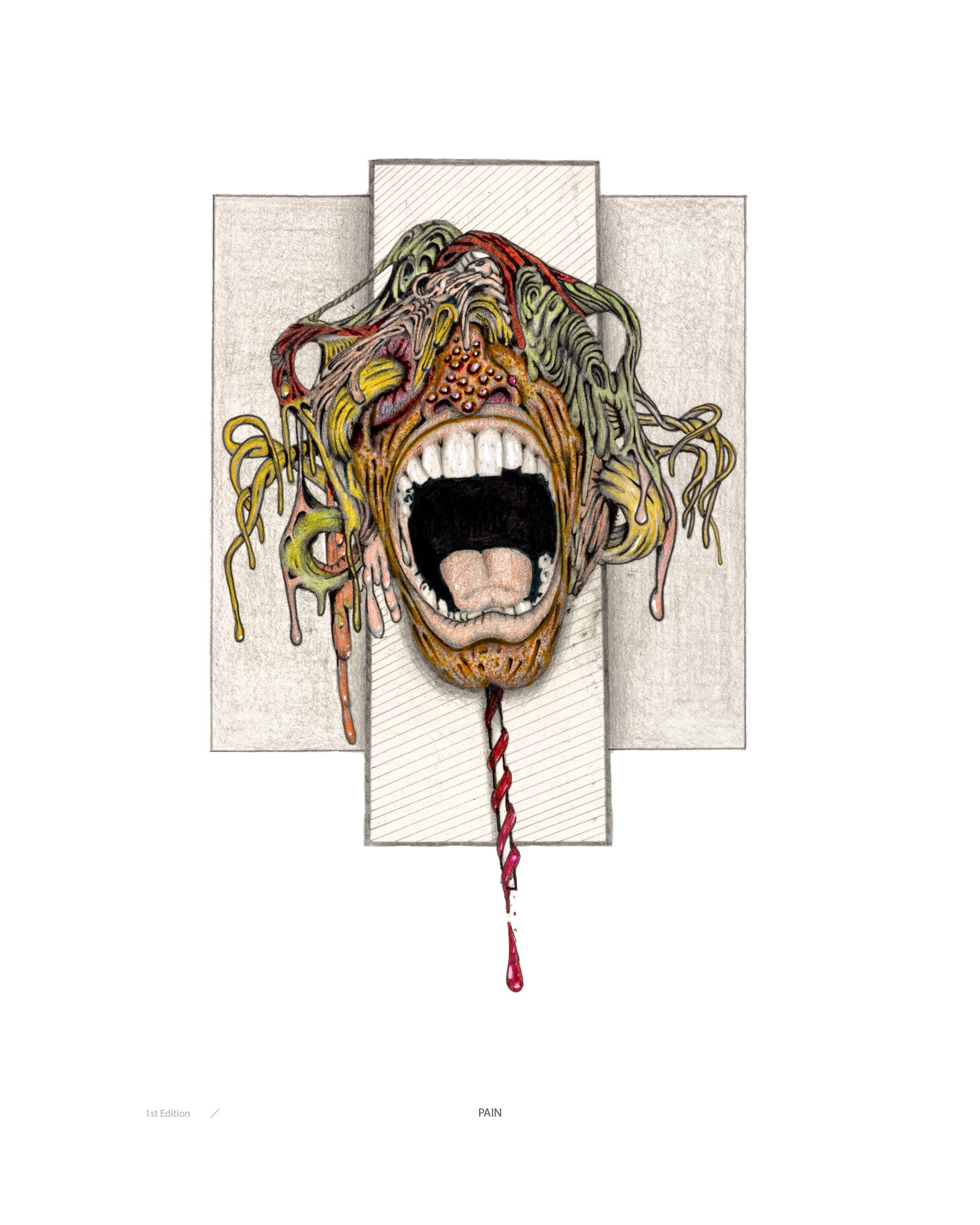- Culture
- 29 May 24
Scott Gorham on his recent art exhibition : "This is something I did on the side, it was more of a relaxing thing"

Celebrating his debut art exhibition in London, Scott Gorham discusses artistic creation, his early days in Thin Lizzy, and the making of the legendary ‘The Boys Are Back In Town’.
Scott Gorham is great craic altogether. A fantastic raconteur, quick to laugh and full of mischief, he’s in top form – and why wouldn’t he be?
The legendary Thin Lizzy, 21 Guns and Black Star Riders guitarist is celebrating his debut art exhibition at Soho’s Karma Sanctum. His drawings are being met with acclaim and selling like hot cakes.
“I gotta say I was really nervous about the exhibition,” he acknowledges with a grin. “I could talk my ass off about guitars, gigs, recording and all that, but now the subject matter has shifted. I’ve never really thought about discussing the whole art side of things. But the audience was great. It was packed and the owner of the Karma Sanctum hotel said it was the biggest crowd they’ve ever had.”
Scott’s intricate hand drawings are reminiscent of Brett Ewins of 2000 AD fame’s work, with a touch of the Celtic tinged, apocalyptic vision of Thin Lizzy sleeve magician Jim Fitzpatrick. As a kid, Scott pored over Al Feldstein’s Mad magazine, but he self-effacingly deflects the Fitzpatrick comparison.
“Jim was the guy that really inspired me to grab that pad and paper, and try to do it myself,” he says. “I was never going to be in Jim’s league, but perhaps I could emulate it in some shape or form. I give giant kudos to Jim Fitzpatrick.”
It was Scott’s wife Christine who discovered a squirrelled-away folder of drawings inspired by the guitarist’s life on the road, getting sober and the state of the planet. She duly encouraged him to unveil his work. Some of his drawings were done during hectic Lizzy tours in the early ‘80s.
“The thing was, in Thin Lizzy, the emphasis was always on the music,” explains Gorham. “This is something I did on the side, it was more of a relaxing thing. When you go on tour, you’re out there for at least a couple of months. You’re there with the same faces. You hear some guy start to tell a joke and you’re like, ‘Oh my god, I’ve heard that five times!’ I loved all those guys, but you do have to get some breathing space every once in a while. Getting into my own fantasy world suited me perfectly.”
And the results really are remarkable.
 The Fanatic by Scott Gorham.
The Fanatic by Scott Gorham.LEAD GUITAR LINES
In an interview in the Hot Press Annual 2024, Lizzy drummer Brian Downey recalled the abrupt departure of the band’s original guitarist, Eric Bell, on New Year’s Eve 1973. He was replaced initially by Gary Moore, before Brian Robertson and Gorham were enlisted later in 1974. Scott takes up the tale.
“Well,” he begins, “my ex-brother-in-law, Bob Siebenberg – still one of my greatest friends ever – was in London for about six months. He got hooked up with his band Supertramp, but had to come back to Los Angeles and get the visa stamped again, so he’s good for another six months. He stayed with me and brought a cassette of demos that Supertramp were working on. It was really sophisticated stuff.
“He says, ‘0h man, guess what, the guitar player Roger Hodgson, he’s not sure if he wants to play guitar. You gotta get your ass over to London, you could probably get in this band’. So, I worked up the money, got myself a plane ticket, flew over, and found out Roger was gonna play the guitar! So now I’m in London and I don’t know anybody. But it was a godsend that I didn’t get the job. I put this little band together called Fast Buck. We were working five days a week in the pubs, and in one of them, there was this Irish guy, Ruan O Lochlainn, a great musician who knew Phil Lynott. He says, ‘There’s this band, I think you might be perfect for these guys. It’s a group called Thin Lizzy’.”
Gorham recalls his initial response.
“My first reaction was, ‘Oh my God, what a shit name!’ Ruan says, ‘No, no, they’re really good. They’re expanding - they’re gonna be a four-piece now and they want two guitars. Want me to put your name down?’ I had only one month left on my visa, so I said, ‘Hell yes. I’ll go down and meet these guys’.
“So, I go down with my guitar. I come through the door and the first thing I hear is, ‘Hey, are you Scott? I’m Phil’ and this big hand comes out to shake my hand. He was so engaging; he couldn’t have been happier to see me. He introduced me to Brian Downey and Brian Robertson. They carried on their conversation and didn’t acknowledge me one bit.
“I find out later on they’d already auditioned 25 guitar players and I’m number 26. I reckon the two Brians were thinking, ‘Well, here’s another reject. No need to shake his hand – he’s out of here. He’s a fucking Yank!’”
Thankfully, the outcome was more positive.
“As soon as I started playing,” says Gorham, “I started to realise how good they really were. And guess what? I really want in to this band! I didn’t really know how I was doing; nobody was saying anything. So, I’m packing up my guitar and getting ready to go. Phil tears up this tiny piece of paper and writes my phone number down really small. I’m thinking, ‘Well, he’s not going to lose that, is he?’ But Phil gave me a call around ten o’clock that night and I joined the band, so it all worked out’.”
It sure did. Robertson and Gorham’s twin lead guitar lines are key to the classic Lizzy sound.
“That actually took hold on the Fighting album,” Scott explains. “Brian went out into the studio to record one guitar line and I was going to probably double it or something. He starts to play this line, and the engineer forgot to take the echo off. There was a millisecond delay and it fed back in harmony! The engineer’s going, ‘Oh my God, I’m sorry, just let me turn it off.’ I’m going, ‘No man, it sounds fucking great!’ That was the beginning. It was one of those good kind of accidents.”
 Pain by Scott Gorham.
Pain by Scott Gorham.ALL OVER AMERICA
Of course, mention twin-guitar attack and most people immediately think ‘The Boys Are Back In Town’.
“And thank God!” Scott laughs, “because that was on album number three. When you have a three-album deal, if you haven’t done anything by the third album, they’re already opening up the door and showing you the way out. We got it from the record company, we got it from management, we even got it from some of the fans – ‘You guys need a hit here!’
“So, we made a list of songs we were going to record for the album. ‘The Boys Are Back In Town’ was not on that list. However, one of our managers, Chris O’Donnell, loved the lyrics and chord sequences on it. That’s when we got to figuring out where to put the guitar harmonies. So, we finished it and said, ‘It sounds good to us, but we don’t know if anybody else is gonna like it’.
“We did not pick that as a single and neither did the record company in England. But it kept going and going until it became a huge hit all over America, from coast to coast.”
• Prints of Scott Gorham’s work are available at scottgorhamworld.com
RELATED
RELATED

- Culture
- 04 Sep 25
Exhibition of photos by asylum seekers in Ireland to open in Wexford

- Culture
- 30 Jul 25
Hugh Lane Gallery to close for "at least three years" for refurbishment

- Culture
- 21 Jul 25







